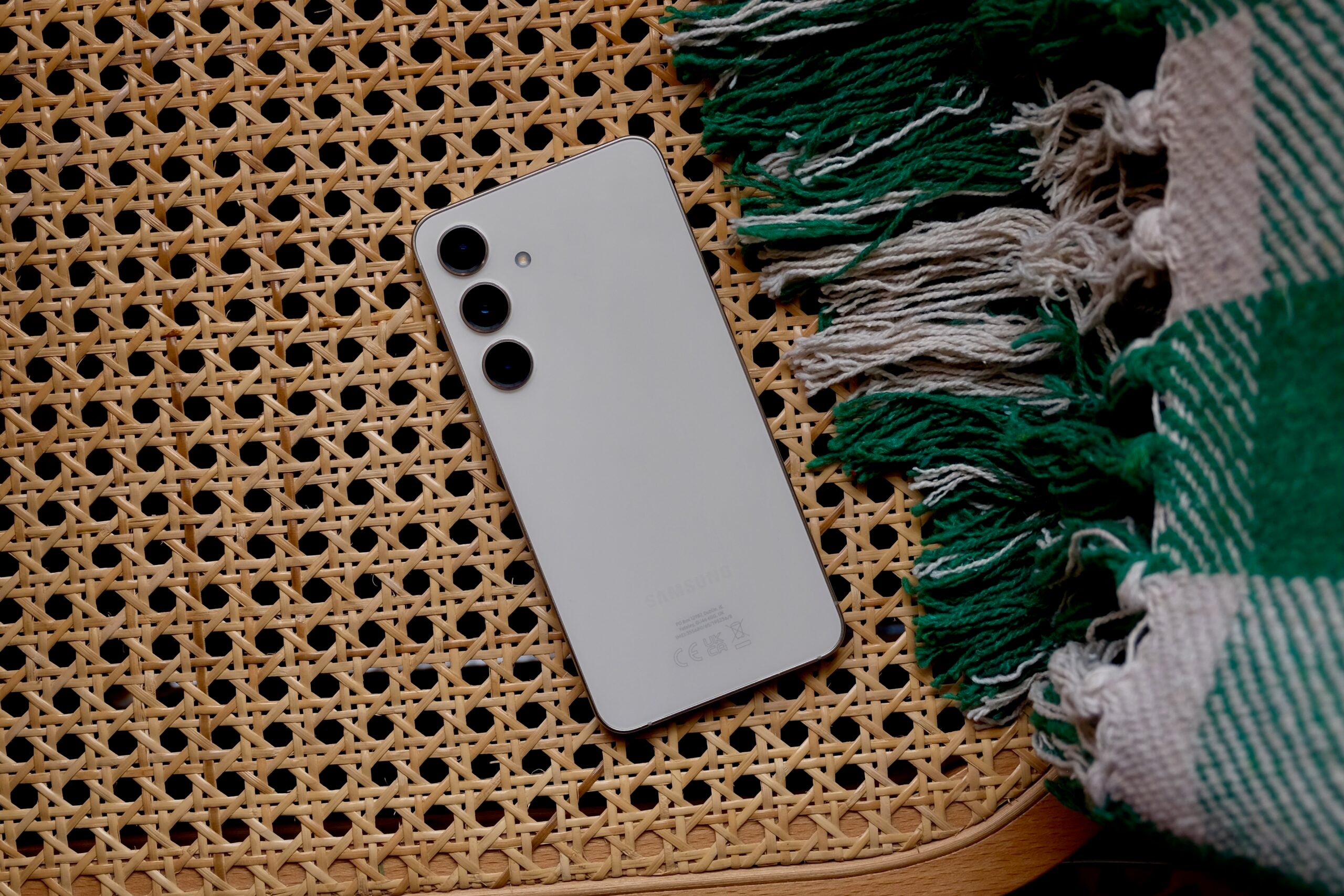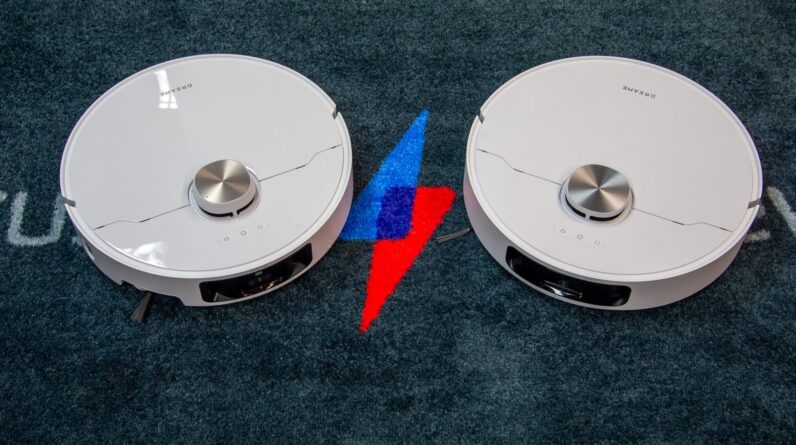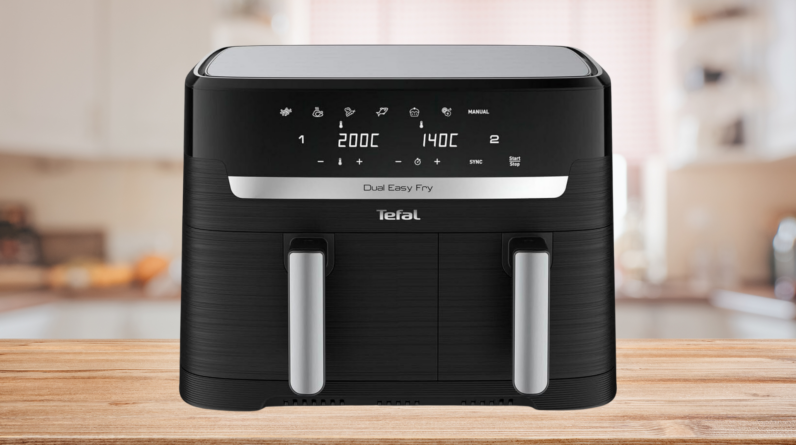
The capable Xiaomi 14T Pro is here, but how does it compare to one of 2024’s most popular flagships, the Samsung Galaxy S24?
While you might expect that the flagship Samsung Galaxy S24 would easily win in this head-to-head, that’s not quite the case.
In fact, with Xiaomi’s latest premium smartphone offering some of the best performance we’ve seen from any smartphone, along with Leica co-engineered cameras, a pixel-packed screen and blisteringly fast charge speeds, it looks like Samsung’s flagship can’t quite keep up with the late 2024 competition.
We’ve spent a lot of time with both the Xiaomi 14T Pro and Samsung Galaxy S24, and here’s how the two compare.
Pricing
The Samsung Galaxy S24 is, on paper, the more expensive of the two smartphones with a £799 RRP, while the Xiaomi 14T Pro comes in £50 cheaper at £649.
However, the Samsung Galaxy S24 has been on sale since January 2024, and that means you can now get it at a discounted price – we’ve seen it for around the £550 mark recently, making it the cheaper of the two smartphones in real-world terms.
Regardless of the phone you opt for, both are available to buy right now in the UK and Europe, and you can also get the S24 in the US, though the same can’t be said for the Xiaomi 14T Pro.
Design
There’s a theme of understated simplicity when it comes to the design of both the Samsung Galaxy S24 and Xiaomi 14T Pro.
Both sport the same general design, complete with flat edges and rounded corners, though there is an ever-so-slight curvature to the Xiaomi 14T Pro that we found allows it to sit in the hand a little more comfortably – though the S24 is far from an uncomfortable phone, with its more pocketable dimensions thanks to its smaller 6.2-inch screen – but more on that in a bit.
The Xiaomi 14T Pro is a larger device, with its 6.67-inch screen, and that means it can be quite difficult to use one-handed, while our reviewer noted that the Galaxy S24’s more pocketable dimensions offered a comfortable one-handed experience – something that’s increasingly rare in an age of large-screen phones.


There are minor differences to their respective approaches; the Galaxy S24 has a matte glass rear that helps negate fingerprints pretty well, while the Xiaomi 14T Pro has a finish that, while also great at repelling fingerprints, was slightly more slippery and reminded our reviewer of Teflon.
Samsung also has the more vibrant colour options of the two, coming in vibrant options like Jade Green, Sandstone Orange, Sapphire Blue and Cobalt Violet alongside Onyx Black and Marble Grey, while the Xiaomi 14T Pro is only available in Titan Grey, Titan Blue and Titan Black.
On the flip side, the Xiaomi 14T Pro has a textured power button to help tell the difference between the volume buttons and the power button – though with Samsung’s volume and power buttons on opposite sides, this isn’t as much of a necessity.
Both are fairly durable devices, offering full IP68 dust and water resistance, though Samsung’s true flagship nature shines through with enhanced Gorilla Glass Victus 2 protection. Xiaomi claims that its screen also has a drop-resistant glass covering, but it doesn’t specify the material or manufacturer used.
Winner: Samsung Galaxy S24
Screen
As noted earlier, there’s quite a difference in screens when it comes to these two devices. While the Xiaomi 14T Pro sports a large 6.67-inch screen that’s quite common in the premium smartphone market, Samsung’s Galaxy S24 takes a different route with a more compact 6.2-inch screen.
Your ideal screen size will largely come down to elements like personal preference and even the size of your hands, likely guiding which of the two phones you’ll go for, but it’s worth noting that there are other differences between the handsets.
The Xiaomi 14T Pro has a faster refresh rate at 144Hz compared to the Galaxy S24’s 120Hz, though only the latter offers LTPO tech for a truly adaptive refresh rate – one of the key upgrades over the Galaxy S23.


That said, our reviewer found that the Xiaomi 14T Pro rarely hit that top refresh rate, even when forcing the screen in the settings, usually capping out at 120Hz in practically every app and game, so there isn’t much of a real-world difference in that sense.
The Xiaomi 14T Pro is brighter, however, capping out at 4,000nits peak brightness which our reviewer noted made using the phone outdoors and watching HDR content a joy. The Galaxy S24 doesn’t reach quite as high, capping out at 2600nits, though we found that even with a lower peak brightness, it was also easy enough to use in bright outdoor settings.
The Xiaomi 14T Pro also introduces 3,840Hz PWM dimming to help ensure viewing comfort in low-light conditions, something not present on the Samsung Galaxy S24, and with a 1.5K resolution, it beats the FHD+ alternative from Samsung too. The former might not be noticeable in everyday use, but the latter very well could be depending on what you’re doing.
Winner: Xiaomi 14T Pro
Cameras
Camera tech is an area where Xiaomi looks to dominate with the 14T Pro. Xiaomi’s premium phone offers not only high-res sensors across two of its three rear cameras, but also Leica smarts. It’s a continuation of the partnership between Xiaomi and the camera experts at Leica we’ve seen for the past few years, and it seems to have really benefitted the Xiaomi 14T Pro.
In addition to offering two distinct Leica shooting modes – Vibrant and Authentic – the trio of rear cameras benefit from accurate colour reproduction, an issue particularly present on the Galaxy S24 with its overly-vibrant blues and greens, sometimes to the point of bordering on the unnatural.
It also helps that the 14T Pro has the same main 50MP sensor as the flagship Xiaomi 14, along with a high-res 50MP 2.6x telephoto camera and a 12MP ultrawide to round things out. The high resolution of the telephoto lens allows it to be pushed beyond its 2.6x in-sensor zoom without too much degradation of quality, especially compared to Samsung’s 10MP alternative, though Xiaomi still has work to do in the dynamic range and focus departments – areas where the Galaxy S24 shines.
That said, the Galaxy S24’s camera setup is looking a little stagnant in 2024, offering the same 50MP main, 10MP 3x telephoto and 12MP ultrawide as the Galaxy S23 and even the Galaxy S22.
Samsung’s ProVisual engine helps boost performance, along with pixel binning tech, to enhance details and boost light, and it can take a great photo in most scenarios, but it doesn’t quite have the same end-look as Xiaomi’s snaps.
Winner: Xiaomi 14T Pro
Performance
You might assume that, being a flagship smartphone, the Samsung Galaxy S24 manages to outpace the cheaper Xiaomi 14T Pro – but reader, that’s really not the case.
First up, it depends on where you buy your Samsung Galaxy S24; in the States, you get the Snapdragon 8 Gen 3, but in most other regions you’ll find Samsung’s in-house Exynos 2400 chipset. There are slight discrepancies in performance among these two chipsets, but broadly speaking, they can deliver a smooth day-to-day experience.
The Xiaomi 14T Pro, on the other hand, sports the top-end MediaTek Dimensity 9300+ chipset that not only beats both variants of the Samsung Galaxy S24 but some of the best-performing Snapdragon-equipped phones like the ROG Phone 8 Pro Edition in its performance-focused X Mode.
That means that, in both everyday use and gaming, the Xiaomi 14T Pro is the clear winner – and that’s backed up by our benchmark testing and real-world use, with our reviewer noting that the performance was “superb”.
Geekbench 6 single core
Geekbench 6 multi core
1 hour video playback (Netflix, HDR)
Battery drain 60-min (music streaming online)
Battery drain 60-min (music streaming offline)
30 minute gaming (light)
Time from 0-100% charge
Time from 0-50% charge
30-min recharge (included charger)
15-min recharge (included charger)
3D Mark – Wild Life
GFXBench – Aztec Ruins
GFXBench – Car Chase
Elsewhere, the Samsung Galaxy S24 comes with either 128, 256- or 512GB of storage, while the Xiaomi 14T Pro starts at a boosted 256GB and offers both 512GB and 1TB options if you want to pay a little extra. Neither have a microSD card slot, however, so you’ll be stuck with whatever storage option you go for.
Winner: Xiaomi 14T Pro
Software
Both the Samsung Galaxy S24 and Xiaomi 14T Pro offer their own spins on the Android 14 experience in the form of OneUI 6 and HyperOS 1 respectively, with the latter allegedly offering an improved experience compared to the older, slightly janky MIUI.
While our reviewer found that the Xiaomi 14T Pro did indeed run smoothly, there wasn’t much in the way of core differences between HyperOS and MIUI. Both are absolutely jam-packed with features, sometimes to a distracting degree, with odd UI quirks that take some getting used to. Xiaomi’s HyperOS also comes packed with bloatware, and our reviewer even found advertisements baked directly into areas of the OS.


Samsung’s OneUI, on the other hand, offers a more simplistic approach to the Android experience with a range of Samsung-created apps and services, some useful, some not. It’s fairly easy to navigate, and unlike Xiaomi’s phone, doesn’t come with bloatware or advertisements.
It’ll also get a whopping seven years of OS upgrades and software patches compared to the Xiaomi 14T Pro’s four OS upgrades and five years of security patches.
Both smartphones also come with AI smarts, though it’s Samsung’s Galaxy AI that’s more fleshed out with features spanning image editing, text creation, translation in phone calls and more.
We found Xiaomi’s feature set to be slightly more limited, focusing mainly on image manipulation and smart additions to the Recorder app, but there’s every possibility that this will expand in future.
Winner: Samsung Galaxy S24
Battery life
The Xiaomi 14T Pro has a larger 5000mAh battery than the Galaxy S24’s 4000mAh cell that, when combined with the powerful, yet efficient, MediaTek chipset, we found could last around 6-7 hours on a charge before needing a top-up.
That’s a pretty sizeable increase on the average of four hours of use that we’d get from the Galaxy S24, even with its smaller, lower-res screen.
What’s more, the Xiaomi 14T Pro is capable of much faster 120W charging speeds than the Galaxy S24, which has the same relatively slow 25W wired charging as the S23, S22 and most other entry-level flagships in the S series for the past few years.
That means that, while the Xiaomi 14T Pro can get a full charge in just 19 minutes, the S24 takes 79 minutes to achieve the same – even with its smaller capacity battery.
Xiaomi’s premium smartphone also has wireless charging covered with 50W wireless charging support, compared to the 15W wireless support you’ll get from the Galaxy S24.
Winner: Xiaomi 14T Pro
Verdict
Both the Xiaomi 14T Pro and Samsung Galaxy S24 are great smartphones that offer a broadly flagship-level experience, but drill down into the specifics and it seems like the Xiaomi 14T Pro comes out on top; it has oodles of processing power, a pixel-packed screen, rapid charging and solid battery life.
That said, the Galaxy S24 represents a more pocket-friendly smartphone with its more compact dimensions, all without compromising on the featureset with elements like LTPO refresh rate tech, a plethora of AI-powered features and one of the longest software promises around.
It’ll likely come down to whether you want a big or small screen, but if you’re open to either, the Xiaomi 14T Pro looks like the better bet.
Buy the Xiaomi 14T Pro if…
You want the best performance possible for gaming, complete with dedicated cooling and rapid 120W fast charge capabilities to keep you untethered from the wall.
Buy the Samsung Galaxy S24 if…
You want a smaller smartphone that doesn’t compromise on the flagship experience with great performance, solid cameras and a truly premium build.
Also consider:
If you’re on the hunt for a premium Android smartphone, why not consider the OnePlus 12R? It has similar levels of performance with LTPO 4 tech not available on most other phones, complete with strong all-day battery life and equally rapid charging capabilities.
There’s also the Honor 200 Pro with its Studio Harcourt collaboration that really boosts portrait photography performance if that’s a priority.






